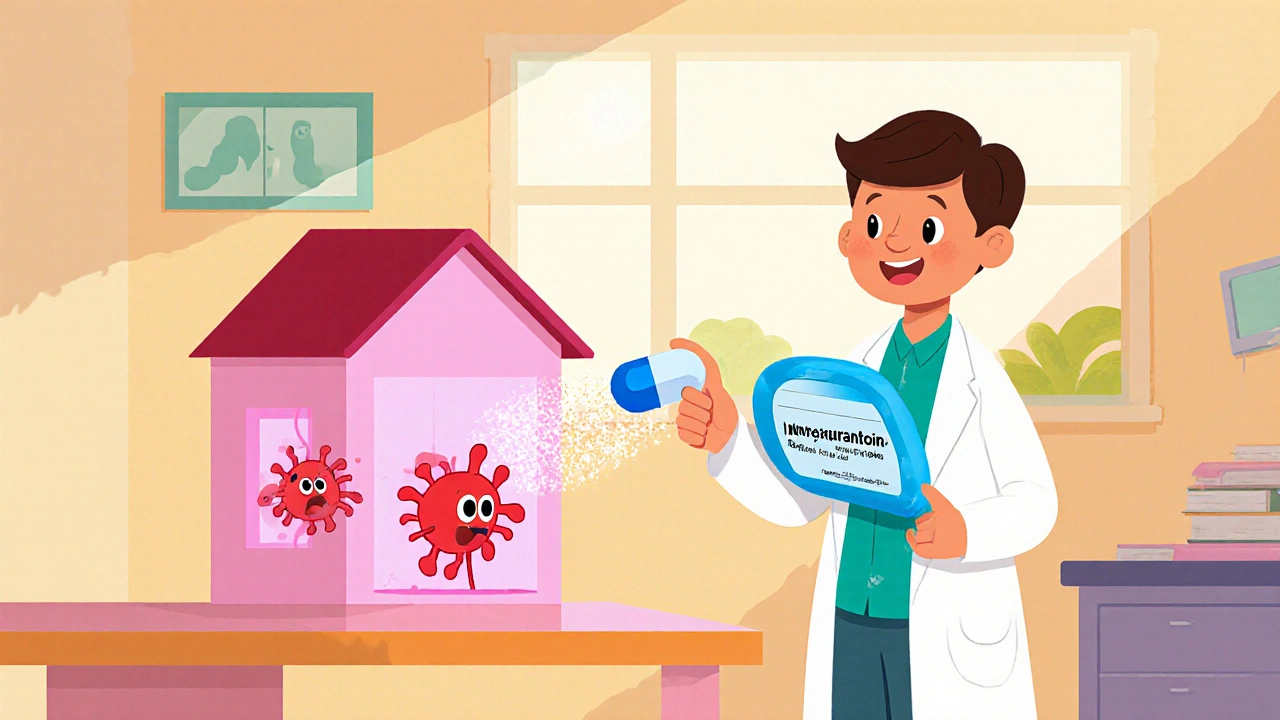Nitrofurantoin: What It Is, How It Works, and What You Need to Know
When you have a nitrofurantoin, a targeted antibiotic used almost exclusively for urinary tract infections. Also known as Macrodantin, it’s not a broad-spectrum drug—it doesn’t go after every kind of bacteria. Instead, it focuses on the ones most likely to cause UTIs, like E. coli. That’s why doctors reach for it when they’re sure the infection is in the bladder or urethra. It’s not for kidney infections, bloodstream infections, or anything beyond the lower urinary tract. If you’ve been prescribed this, it’s because your doctor picked a drug that’s effective, affordable, and gentle on your gut compared to stronger antibiotics.
Nitrofurantoin works by damaging bacterial DNA and stopping them from making proteins they need to survive. It doesn’t get absorbed much into your bloodstream, which is actually a good thing—it means the drug stays concentrated where it’s needed: in your urine. This also lowers the chance of side effects like yeast infections or antibiotic resistance elsewhere in your body. But it’s not harmless. Some people get nausea, dizziness, or headaches. Rarely, it can cause lung or nerve problems, especially if you’re older or take it for longer than five to seven days. That’s why it’s meant for short-term use only.
You’ll often see nitrofurantoin compared to other UTI drugs like trimethoprim-sulfamethoxazole, a common alternative that works well but has more allergy risks, or fosfomycin, a single-dose option for quick relief. Unlike those, nitrofurantoin usually requires a 5- to 7-day course. It’s cheaper than many newer options and still one of the most reliable choices for uncomplicated UTIs in otherwise healthy adults. But it’s not for everyone. If you have kidney problems, are pregnant in the last month, or are allergic to it, your doctor will pick something else.
The posts below cover real-world situations where nitrofurantoin comes up—when it’s the right call, when it’s not, what to do if it doesn’t work, and how it fits into broader antibiotic use. You’ll find comparisons with other UTI treatments, stories from people who had side effects, and tips on how to take it right so it actually works. No fluff. Just clear, practical info you can use.

